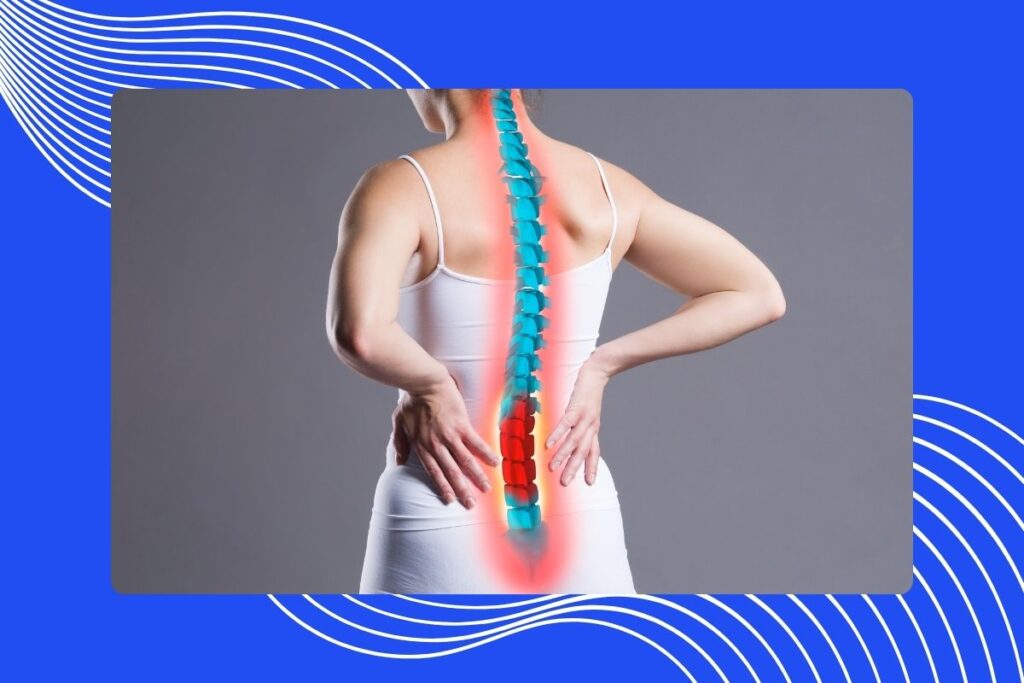Chronic pain is a pervasive issue that affects millions of people worldwide, significantly impacting their quality of life. Unlike acute pain, which is temporary and often signals injury or illness, chronic pain persists for months or even years. Understanding the various types of chronic pain and the treatments available is crucial for managing this condition effectively. Pain management specialists play a vital role in diagnosing and providing tailored treatments to alleviate chronic pain. This blog will explore the top 10 common types of chronic pain and the approaches used by pain management specialists to treat them.
1. Lower Back Pain
Lower back pain is one of the most common types of chronic pain, affecting people of all ages. It can be caused by various factors, including poor posture, degenerative disc disease, and herniated discs. Symptoms typically include persistent pain, stiffness, and limited mobility, which can significantly affect daily activities and quality of life.
Treatment Options:
- Physical Therapy: This involves exercises to strengthen the muscles supporting the spine, improve flexibility, and enhance posture. Techniques such as manual therapy, ultrasound, and electrical stimulation may also be used.
- Medications: NSAIDs (Nonsteroidal anti-inflammatory drugs) help reduce inflammation and pain. Muscle relaxants and pain relievers can also be prescribed to manage symptoms.
- Epidural Steroid Injections: These injections deliver corticosteroids directly into the epidural space around the spinal nerves, reducing inflammation and providing pain relief.
- Minimally Invasive Procedures: Techniques such as radiofrequency ablation, where heat is used to disrupt nerve function, can provide long-term pain relief.
2. Migraine and Headaches
Migraines are severe headaches often accompanied by nausea, vomiting, and sensitivity to light and sound. They can be triggered by stress, certain foods, hormonal changes, and environmental factors. They can be debilitating and affect personal and professional life.
Treatment Options:
- Medications: Triptans are often used to relieve migraine symptoms. Anti-nausea drugs can help manage associated symptoms. Preventive medications, such as beta-blockers and anticonvulsants, can reduce the frequency of migraines.
- Lifestyle Changes: Identifying and avoiding triggers, maintaining a regular sleep schedule, and managing stress through techniques like yoga and meditation can help reduce the frequency and severity of migraines.
- Botox Injections: Botox can be injected into specific areas of the head and neck to prevent migraines by blocking the release of chemicals involved in pain transmission.
- Nerve Blocks: These involve injecting anesthetic around specific nerves to provide temporary relief from severe headache pain.
3. Osteoarthritis
Osteoarthritis is a degenerative joint disease that causes the cartilage in joints to wear down, leading to pain, stiffness, and decreased range of motion. It commonly affects the knees, hips, and hands and is more prevalent in older adults.
Treatment Options:
- Physical Therapy: Involves strengthening exercises to support affected joints, improve range of motion, and reduce pain. Aquatic therapy can also be beneficial for reducing joint stress.
- Medications: Acetaminophen and NSAIDs can help manage pain and reduce inflammation. Topical pain relievers applied directly to the skin over the joints can also provide relief.
- Corticosteroid Injections: These injections can reduce inflammation and pain in the joints, providing relief for several months.
- Joint Replacement Surgery: In severe cases, when other treatments fail to relieve pain, joint replacement surgery may be necessary to restore function and improve quality of life.
4. Rheumatoid Arthritis
Rheumatoid arthritis is an autoimmune disorder that causes chronic inflammation of the joints, leading to pain, swelling, and stiffness. Unlike osteoarthritis, it can affect multiple joints and is often symmetrical (affecting the same joints on both sides of the body).
Treatment Options:
- DMARDs: Disease-modifying antirheumatic drugs, such as methotrexate, can slow disease progression and reduce joint damage.
- Biologics: These are advanced medications that target specific components of the immune system to reduce inflammation and prevent joint damage. Examples include TNF inhibitors and interleukin inhibitors.
- Physical Therapy: Helps maintain joint function, reduce pain, and improve overall physical health through exercises tailored to the individual’s condition.
- Joint Injections: Injections of corticosteroids or hyaluronic acid can provide relief from severe joint pain and inflammation.
5. Fibromyalgia
Fibromyalgia is characterized by widespread musculoskeletal pain, fatigue, sleep disturbances, and tender points. The exact cause is unknown, but it is believed to involve abnormal pain processing in the brain and may be triggered by physical trauma, infection, or significant psychological stress.
Treatment Options:
- Medications: Antidepressants like duloxetine and anti-seizure drugs such as pregabalin are often used to manage pain and improve sleep.
- Physical Therapy: Gentle exercises, including stretching and aerobic activities, can improve strength and flexibility and reduce pain. Aquatic therapy is also beneficial.
- Cognitive Behavioral Therapy (CBT): This therapy helps manage pain by changing the way individuals think and behave regarding their pain.
- Lifestyle Changes: Regular exercise, a healthy diet, good sleep hygiene, and stress management techniques are crucial for managing fibromyalgia symptoms.
6. Neuropathic Pain
Neuropathic pain results from damage to the nervous system and is often described as burning, tingling, or shooting pain. It can be caused by conditions such as diabetes, shingles, multiple sclerosis, or traumatic nerve injuries.
Treatment Options:
- Medications: Anticonvulsants like gabapentin and pregabalin, as well as antidepressants such as amitriptyline, are commonly used to treat neuropathic pain. Pain relievers, including opioids, may also be prescribed for severe pain.
- Nerve Blocks: Injecting anesthetic near affected nerves can provide temporary pain relief by interrupting pain signals.
- Spinal Cord Stimulation: This involves implanting a device that delivers electrical impulses to the spinal cord, blocking pain signals from reaching the brain.
- Physical Therapy: Exercises to improve function, reduce pain, and prevent further nerve damage.
7. Cancer Pain
Cancer pain can result from the disease itself or from treatments such as surgery, chemotherapy, and radiation. The pain can be acute or chronic, and its intensity varies depending on the type and stage of cancer.
Treatment Options:
- Medications: Opioids, NSAIDs, and adjuvant analgesics are used to manage cancer pain. The choice of medication depends on the severity and nature of the pain.
- Radiation Therapy: This can shrink tumors that are pressing on nerves or other structures, thereby reducing pain.
- Nerve Blocks: These can help reduce pain by blocking the transmission of pain signals from the affected area.
- Integrative Therapies: Acupuncture, massage, relaxation techniques, and other integrative therapies can complement medical treatments to help manage pain and improve overall well-being.
8. Post-Surgical Pain
Post-surgical pain is common after major surgeries and can persist for months or even years, developing into chronic pain. Effective pain management is crucial for recovery and improving the quality of life.
Treatment Options:
- Medications: Opioids, NSAIDs, and acetaminophen are commonly used to manage post-surgical pain. Multimodal pain management strategies combining different types of medications can enhance pain relief while minimizing side effects.
- Nerve Blocks: These provide targeted pain relief by injecting anesthetic near the surgical site.
- Physical Therapy: Helps restore function, reduce pain, and prevent complications such as stiffness and muscle weakness.
- Alternative Therapies: Cold therapy, TENS units (transcutaneous electrical nerve stimulation), and relaxation techniques can help manage pain and promote healing.
9. Complex Regional Pain Syndrome (CRPS)
CRPS is a chronic pain condition that typically affects an arm or leg after an injury, surgery, or stroke. It is characterized by severe pain, swelling, changes in skin color and temperature, and limited range of motion.
Treatment Options:
- Medications: NSAIDs, corticosteroids, and pain relievers can help manage symptoms. Medications such as bisphosphonates and gabapentin may also be used.
- Physical Therapy: Involves exercises to improve movement, strength, and flexibility. Mirror therapy and graded motor imagery are specific techniques used in CRPS.
- Sympathetic Nerve Blocks: Injections to block pain signals from the sympathetic nervous system can provide relief.
- Spinal Cord Stimulation: Electrical impulses are delivered to the spinal cord to alleviate pain.
10. Pelvic Pain
Pelvic pain can be caused by conditions such as endometriosis, interstitial cystitis, pelvic inflammatory disease, and chronic prostatitis. It affects both men and women and can be debilitating, impacting daily activities and quality of life.
Treatment Options:
- Medications: NSAIDs, muscle relaxants, and pain relievers can help manage symptoms. Hormonal treatments may be used for conditions like endometriosis.
- Physical Therapy: Pelvic floor exercises to strengthen muscles and reduce pain. Biofeedback and electrical stimulation can also be beneficial.
- Nerve Blocks: Targeted pain relief through injections of anesthetic near the affected nerves.
- Pelvic Floor Therapy: Specialized physical therapy for pelvic pain, focusing on relaxing and strengthening the pelvic floor muscles.
Key Takeaways
Chronic pain is a complex condition that requires a multifaceted approach to treatment. Pain management specialists are equipped with the knowledge and tools to diagnose and treat various types of chronic pain, helping patients regain their quality of life. By combining medical treatments, physical therapy, and integrative therapies, specialists can provide comprehensive care tailored to each patient’s unique needs. If you are experiencing chronic pain, consult a pain management specialist to explore your treatment options.



